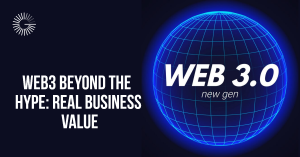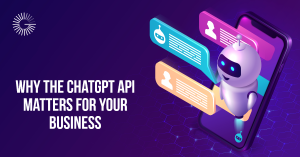There was a tech startup that launched a very well-developed app that deals with controlling the stocks of restaurants- notifications, graphs, and modern interface. At the half year mark, usage was nearly zero. This was not due to the failure of the code- it is due to the fact that the restaurants did not experience any problems with inventory. Their Real Problem? Eleventh hour staffing.

That is why the ability to explain a complex concept or idea in simple terms is the key behind every successful digital product. What is the real problem? We require no other answer, before we build. Since without that comprehension, the brightest code is capable of solving the wrong thing.
The Hidden Cost of Building Too Soon
There is the temptation to move too fast. Many teams leap into the development phase when budgets have been accepted and the deadlines are near. UI prototypes get published and soon the code begins to ship. However, forgoing discovery all too frequently means rushing to create at breakneck speed (and on the wrong path). What is mistaken today as forward motion can turn into the reworking tomorrow.

However, the discovery phase taken short might be expensive. A report by McKinsey finds that about 45 % of overrun in IT project budgets are as a result of misinterpreted requirements rather than technical difficulties. That is, the wrong solution is constructed quickly and teams solve symptoms, not causes. Those are the momentum wasted, not progress.
Startups That Solved the Wrong Problem
One fintech inventor even asked to have a slimmed-down analytics dashboard that could assist banks in the countryside. Technically, the solution was good. However, the majority of the users used the tool in 2G networks and feature phones. The problem was that they required an SMS-based reporting system not a web application. A product build without regard to the user context was not only a miss, but a delay and waste of time.

The case is typical in any industry. It can be a retail brand adopting AI to service their clients before getting its logistics of returns on point, or an eCommerce merchant investing heavily in AR filters when checkout abandonment reaches sky-high levels, but the latter issue is typically not technological, it is the misalignment of its goal. Crucially, teams work to be innovative, and they forget to get to the core pain points, creating blingy features that address the wrong ailments.
Questions Drive Alignment Across Teams
The correct questions are not of benefit to the product managers or those of the designers alone; they bring everybody on board. The solutions become more incisive when engineering goals know business intentions, or founders know what the users are doing (as opposed to what they claim). This common transparency enables smarter trade off, less cross work and cross-functional cooperation into an actual competitive advantage.

One study of Harvard Business review demonstrated that cross-functional teams that take a discovery and validation approach prior to construction and design lead to a 22 % increased product adoption rate over teams who assume. The takeaway? Investments in getting on the same page with the correct problem is rewarded not only when it comes to shipping faster, but in actual usage.
Code Should Be the Last Step, Not the First
Coding is wrongly regarded as progress in most dev cycles that seem to be fast-paced. However, each hour spent on the development of the wrong product is a waste. Validating first flip-flops the process and de-risks time and money, and it courses energy into teams in the form of direction, not motion. The speedy shipping is not what matters, but how accurate you build.

One good instance is a logistic company that believed AI was the solution to maximize shipment. Following one such discovery sprint it became apparent that what they required was improved route visibility by the dispatchers, not predictive algorithms. That change in explicating the problem only took them six months of dev time out of the process, and thousands of dollars of technology investment.
Ask Better Questions, Get Better Answers
Good questions are precise, yet open ended. The question of whether to build a dashboard provides much less information than why the feature is important to users. It is not about coming to the conclusion, one that will confirm your hypothesis, it is about discovering what is important, regardless of whether it will upset your belief or take your road-map completely in a different direction.

The famous design company IDEO applies a technique called the Five Whys in an attempt to explore user requirements further. A no-nonsense (but proven) technique of simply repeating the word why five times in sequence will often uncover the underlying pain behind the superficial request, and many teams can readily bridge the gap between symptoms and effect with tactics like this.
The Business Impact of Asking First
As demonstrated in a 2022 report by IBM, those companies in which discovery and validation processes were well-developed had a 33 % quicker time-to-market and reduced post-launch incidents by 50 %. The lesson is simple: questioning is not only UX, asking questions is a business strategy. It is time-saving, minimizes the rework and guarantees the solution produces significant impact on the first day.

A different example was the automation of an appointment-scheduling service with a health-tech company. The interviews showed that patients were not skipping appointments due to the schedule but were mixed up when it came to insurance coverage. The effect of shifting to educational content gave a greater impact than the initial proposal. A classic example of solving the wrong problem and a good lesson of why discovery goes before.
Questions Build Better Software for Everyone
Modular and cleaner code is written by engineers who know the reason. Intuitive flows are designed when designers are aware of the target. Even testers, on their part, perform better in testing against user intent when compared to generic QA checklists. Having the whole team working toward the same purpose, rather than merely the result, will turn out a product that does work, as opposed to the product that does not work.

The empathy resulting from questions helps in building better systems. Teams develop holistically rather than developing features in isolation; they emphasize on needs, behaviors and even constraints, which do not manifest in specs. As a result of this shift, products end up being rather intuitive as opposed to driven, the solutions have the answer to the actual problem and not necessarily what is outlined in brief.
It’s Not Just What You Build, It’s What You Don’t
Not all the good decisions are made by building. At one time, a real estate firm contemplated on developing a standalone scheduling app dedicated to the use of agents. Two weeks of discovery passed, and they understood that the existing tools could just be combined; there was no necessity to create a new platform. The result? The quicker deployment, improved affordability, and increased adoption by the teams: all possible only with a few right questions at the initial stages.

Every product that gets the wrong product should avoid it because that alone can be as powerful as shipping the right product. Subtraction can be a path to product clarity: removal of the unnecessary helps to make a clearer picture, saves resources, and makes the team focus on what is actually important. The thing is not building fast, but rather building right.
Conclusion
Even without deliberations, code can easily be mistaken as progress during the hurry to deliver products and features as per the deadlines. However, progress only begins with the first line of the script, it begins with questions that can reveal the actual issues, clarify a clear expected result, and do not cause a waste of time.
By making discovery the priority, teams can release higher rates of alignment, well-founded solutions and speed of adoption. The question of why at the right moment does not only save money, it creates software, people want, desire and are willing to use.
We do not code at Gyan Solutions, we coordinate. Our discovery first attitude means your product strategy is keen, your development is focused and your end users are empowered.

With a deep passion for technology and enterprise growth, I help organizations embrace AI development, blockchain solutions, and custom software to drive lasting transformation. As Senior Business Development Manager at Gyan Consulting, I combine strategic insight with hands-on industry knowledge, enabling businesses to scale smarter and innovate with confidence. View Profile






